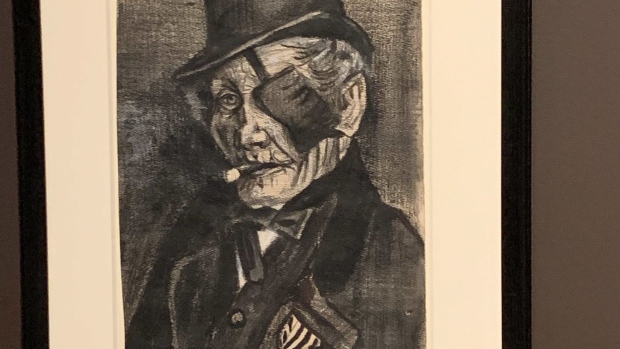Sep 29, 2022
One of the Largest Van Gogh Exhibitions Ever Is Headed to Detroit
, Bloomberg News

(Bloomberg) -- In 1922 the Detroit Institute of Arts (DIA) became the first-ever American museum to acquire a painting by Vincent van Gogh. The museum paid a mere $4,200 for a self-portrait the artist had painted in 1887. A century later, that acquisition is paying dividends as the Motown museum hosts one of the largest-ever Van Gogh exhibitions, starting on Oct. 2.
The show will feature 74 of van Gogh’s paintings and drawings. Five already belong to the DIA, and 69 have been borrowed from 60 other museums and private collections around the globe. This required loans that were, in some cases, tough to come by: Owners resist parting with van Goghs for even for a few months.
“When visitors come to museums, the first thing they want to see is their van Goghs,” says DIA director Salvador Salort-Pons. “It is one of the largest exhibits that has been organized by a museum that isn’t the van Gogh Museum.”
“Van Gogh in America“will open on Oct. 2 and run until Jan. 22. It will not appear in other museums.
At the time the DIA bought its first van Gogh, the Dutch post-Impressionist was little known in the US. The initial acquisition’s price would be worth about $75,000 in today’s dollars. Now, van Gogh paintings sell for tens of millions of dollars; last year, his 1889 work Wooden Cabins among the Olive Trees and Cypresses drew $71.4 million at auction. His auction record dates to 1990, when his 1890 Portrait of Dr. Gachet sold for $82.5 million. That figure would be worth more than twice as much today, given inflation.
Visiting the Exhibition
A tour of the exhibit begins with a 1888 painting of van Gogh’s Chair, on which the artist had set his pipe and pouch of tobacco. The yellow tones radiate from the canvas with a halo effect.
The DIA exhibit includes some of van Gogh’s most famous work. One is that first acquisition, the 1887 Self Portrait in which wears a straw hat and blue shirt. Exhibit curator Jill Shaw says the painting is among the artist’s best known, at least partially because Kirk Douglas wore a similar hat when playing van Gogh in the 1956 film Lust for Life.
Museum goers will see enough paintings and lithographs to experience the evolution of van Gogh’s style. When he moved to the south of France in 1888 and then worked with fellow artist Paul Gauguin, some of his work displayed the stark borders and darker colors often used by his mentor.
There are rare works, too. A dark, eerie black-and-white lithograph called The Wounded Veteran (circa 1882-83) features an old man with an eye patch who looks barely alive. Van Gogh found his subject in a nearby home for the elderly.
Casual art appreciators will encounter familiar works among van Gogh’s self-portraits, along with such notable paintings as Poppy Field (1890) and Starry Night (Starry Night Over the Rhône) from 1888, which appears in the exhibit’s grand finale.
Despite the immortalized image of the painter lacking an ear, Shaw hopes the collection will show people van Gogh’s more important side.
“His painting did not come from his mental health,” she says. “He was methodical and thoughtful.”
©2022 Bloomberg L.P.


